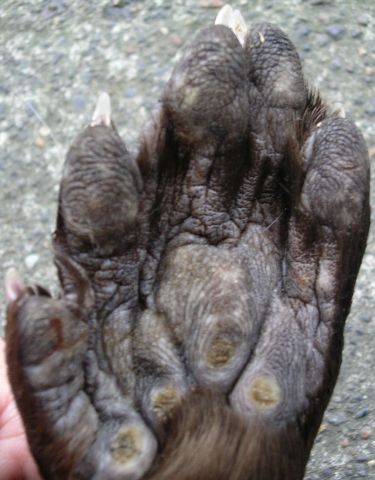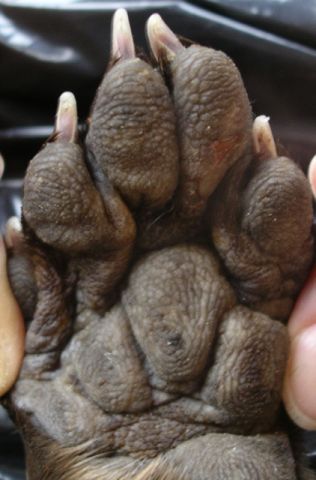

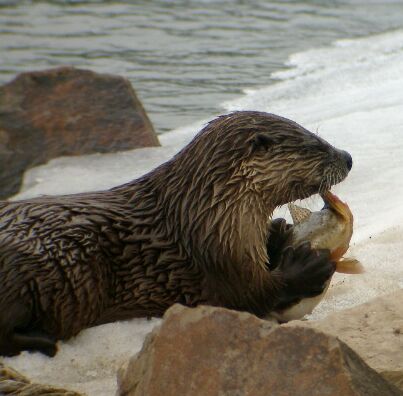
I always feel honored when I get to watch an otter at work or play. When tracking along the river, I often find their distinctive tracks, gaits, and occasionally see scat or slides.
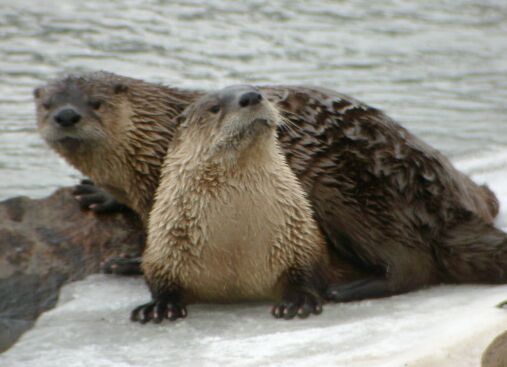
Otters will often haul out on the bank to socialize, play, or explore. The size and location of their tracks makes them fairly distinctive. Many of these photos were taken at Oxbow Park on the Sandy River. These first tracks are fairly typical for sand.
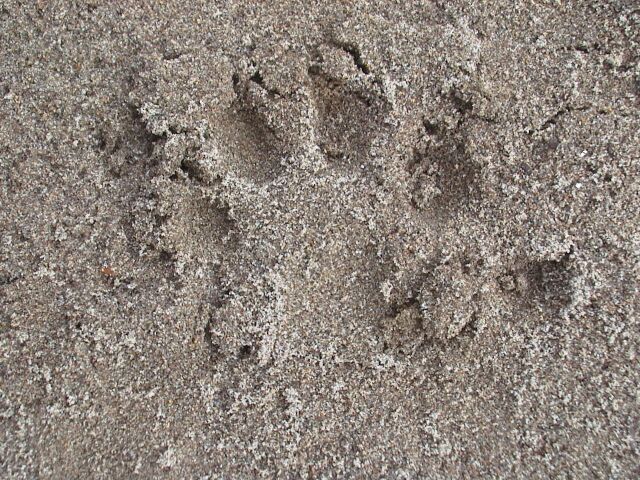

In firm, wet sand the tracks look a little different, but the otter characteristics are still there. Here we have a front and hind track as the otter was climbing the river bank.


A flood deposited a fine layer of silt over the mud and sand. It dried rather hard so only the claws show when the otter passes by.
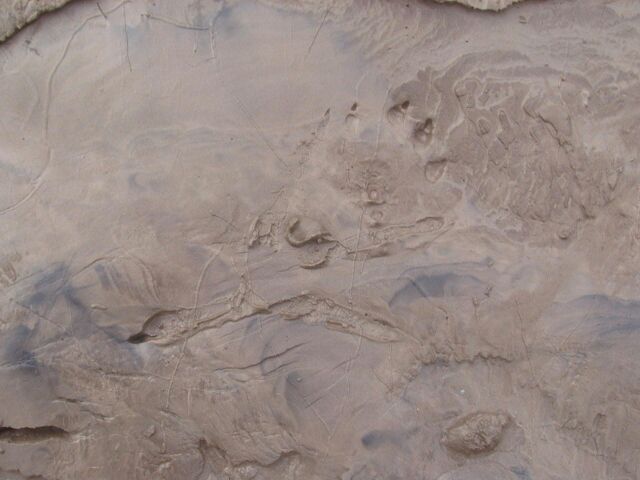
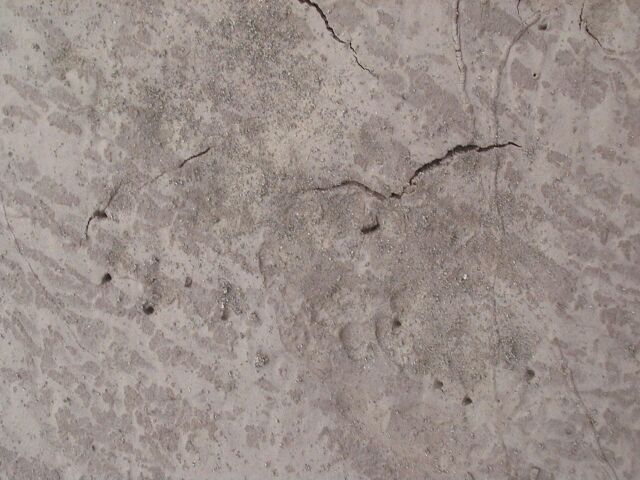
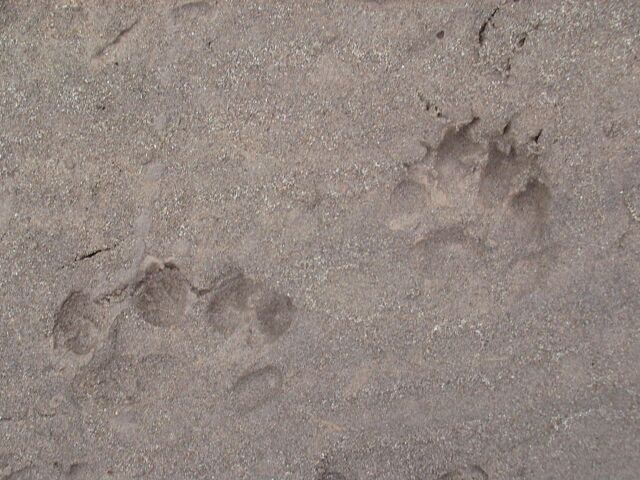
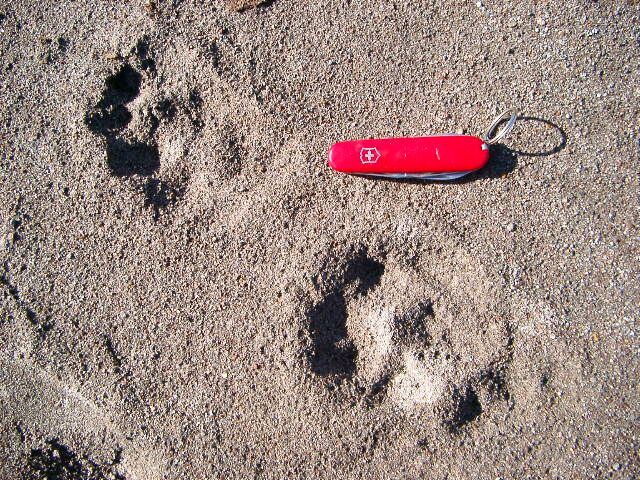 Photo by Dennis Deck
Photo by Dennis Deck
This first set shows a bounding gait typical of the otter in wet, firm sand. The pattern ranges from a 2x2 diagonal pattern (like smaller weasels) to a 3x3 or 4x4 pattern.
On rare occasions otter leave their wet, loose scats. If you look close you can make out fish bones
(long and white) and the fins (transluscent and fan shaped). The red color is probably due to crayfish.
Left hind foot. Left front foot.Gaits
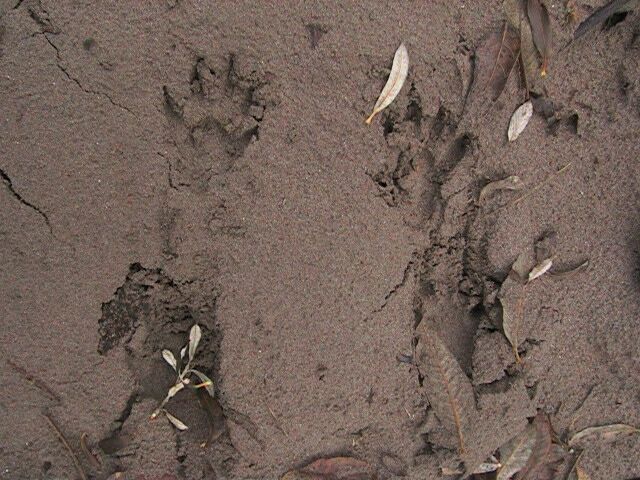

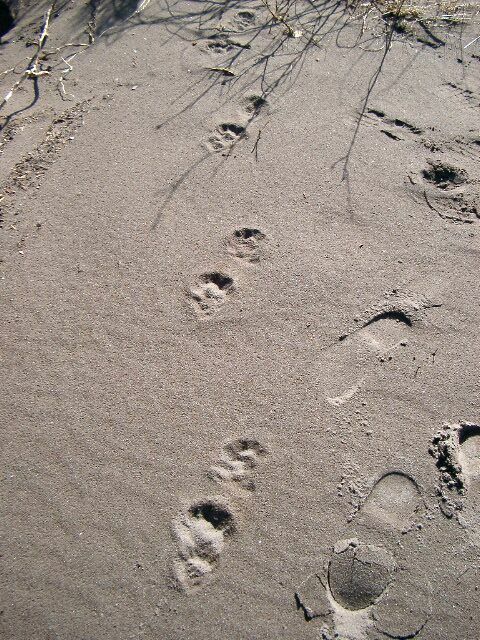
Scat
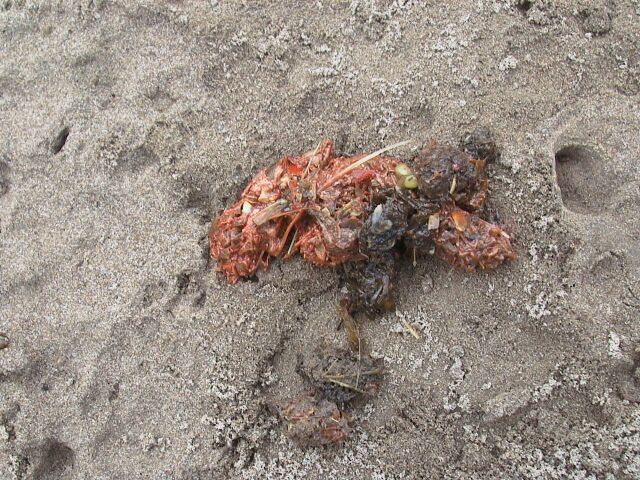
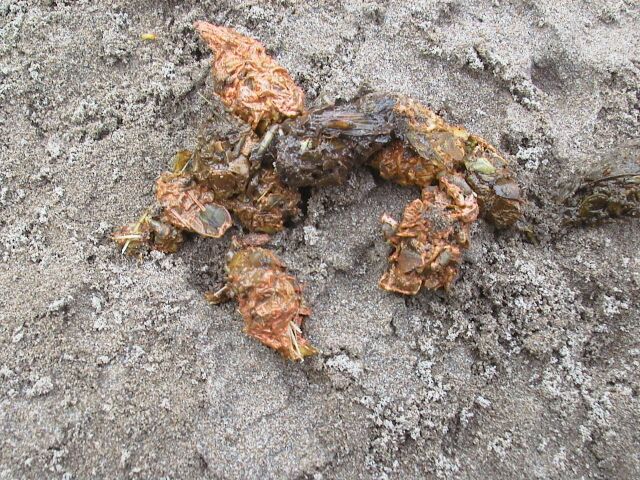
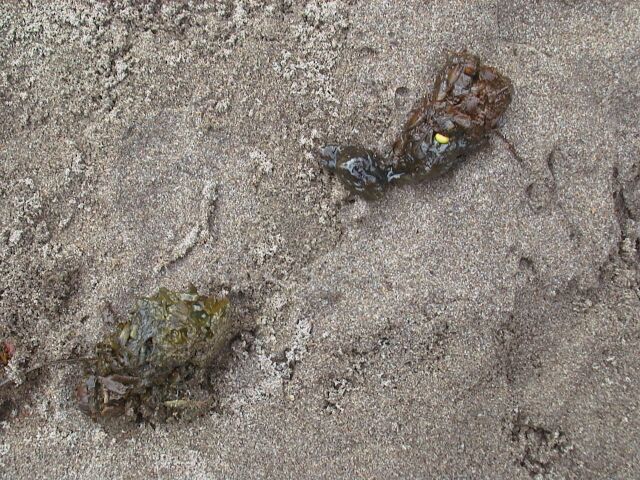
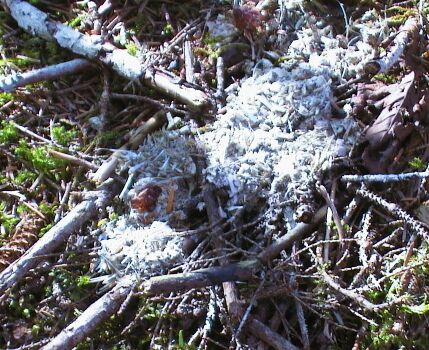
Foot
